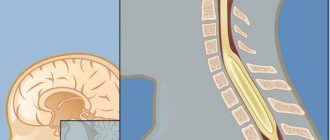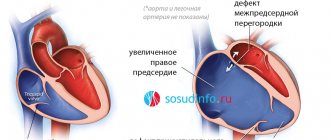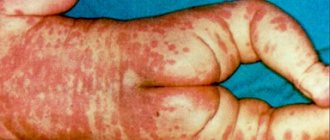Cleft lip and palate: the defect can be corrected
Cleft lip and palate is one of the most common congenital malformations of the upper jaw: it occurs in a third of patients with congenital malformations. In Moscow, 1 in 800 babies are born with this developmental defect.
The anomaly is usually detected by ultrasound in the 1st-2nd trimester of pregnancy. Such news is a huge stress for future parents. But in most cases, thanks to timely and qualified treatment, cosmetic and functional defects in the baby can be eliminated.
At what age is surgical treatment most effective and how a complex anomaly is treated, Elvira Sergeevna Mkrtumyan, a maxillofacial surgeon and plastic surgeon at the Morozov Children's Hospital, told.
What influences the formation of a defect?
The defect is formed in the first two months of the child’s intrauterine development, when the formation of the facial skeleton occurs. The cause of the development of pathology is a chromosome abnormality.
The development of the defect is influenced by both hereditary factors (7%) and external factors (40%). External ones include infectious and viral diseases, smoking, drugs, alcoholism, the use of certain medications, lack of vitamin folic acid, poor ecology, and so on.
What types of clefts are there?
Clefts can occur in both the lips and palate. They, in turn, can be isolated (only the lips or only the palate) and through, when the defect extends to the upper lip, alviolar process and palate. Each type has varying degrees of severity. In addition, the defect can be either unilateral (usually on the left) or bilateral.
With an isolated cleft lip, as a rule, the deformation may be minor, or may be accompanied by deformation of the nasal septum, alar cartilage and alveolar cleft, which subsequently leads to dental problems.
With cleft palates (from minor clefts of the soft palate only to severe bilateral lesions of the soft and hard palates), children may have problems with eating, breathing, sucking, and subsequently with sound pronunciation. Thanks to timely surgical intervention, it is possible to obtain an ideal treatment result.
The most severe form is bilateral through cleft lip and palate. But even in this case, timely treatment and rehabilitation give the baby a chance for recovery.
If, during intrauterine diagnostics, a cleft is discovered in the baby, what should parents do?
The most important thing I would like to say to parents who are faced with this problem is that there is no need to worry. It is important to immediately consult with maxillofacial surgeons involved in the treatment of pathology.
We advise future parents even before the baby is born. We tell you how to feed your child correctly - it is better with a spoon or a bottle with special nipples in order to preserve swallowing reflexes, because with prolonged tube feeding they can fade.
Often this defect can be accompanied by pathology of the bone and cardiovascular systems, kidneys. Therefore, it is important to undergo tests immediately after birth to rule out these diseases. If the baby does not have other serious concomitant diseases, we prescribe planned surgical treatment to eliminate the defect.
At the request of the parents, after the maternity hospital, the child can be transferred to the neonatology department of our hospital, where the mother will be taught how to feed the child, examined and given recommendations for management before a planned operation.
At what age is surgical treatment most effective?
The optimal age for surgery to correct a cleft lip and eliminate nasal deformity, if there is no gross pathology among other systems, is 3 months. Earlier plastic surgeries do not provide the opportunity to obtain the best aesthetic result.
If the child has a severe form of cleft, correction can be carried out in two stages. At six months, if it concerns the palate, it is the soft palate; from one to two years, it is the hard palate. If surgical treatment is carried out in one stage, then it is performed at the age of 9 months to 1.5 years. This has a number of advantages: the child endures one rather than two anesthesia, the tissues are more mature, which means the treatment result will be more effective. We recommend palate plastic surgery for children under two years of age, until the child’s brain—the center of speech—has formed incorrect speech.
If the child has a severe form of cleft, correction can be carried out in two stages. At six months, if it concerns the palate, it is the soft palate; from one to two years, it is the hard palate. If surgical treatment is carried out in one stage, then it is performed at the age of 9 months to 1.5 years. This has a number of advantages: the child endures one rather than two anesthesia, the tissues are more mature, which means the treatment result will be more effective. We recommend palate plastic surgery for children under two years of age, until the child’s brain—the center of speech—has formed incorrect speech.
What operations are performed for cleft lip and palate?
Correction of a congenital anomaly requires an integrated approach. It is aimed not only at eliminating a cosmetic defect, but also at reconstructing functional disorders, eliminating problems with swallowing, breathing and sound pronunciation. The volume and type of operational benefit depends on the characteristics of each child and is selected individually.
If the cleft looks like an isolated lip or palate, surgical treatment will be performed in one stage. In the most difficult cases, correction is carried out in several stages.
For isolated cleft lip without significant deformation of the nose, cheiloplasty is performed. The vestibule of the oral cavity (the space located under the upper lip) is created, the integrity of the orbicularis muscle of the upper lip is restored, and a red border is formed. If the upper lip defect is more severe, then a one-stage cheilorhinoplasty (lip and nose surgery) is performed. We perform lip plastic surgery and place the alar cartilages of the nose in a symmetrical position. On the 7th day, postoperative sutures are removed and the children are discharged from the hospital with recommendations for further management of the child.
An isolated cleft palate manifests itself as an anatomical damage to the soft palate (mobile palate) or the soft and hard palate. The pathology is accompanied by impaired swallowing, breathing and sound pronunciation. Palate plastic surgery involves restoration of the hard palate and soft tissues of the velum, and closure of the alveolar process. After the operation, when children reach 3 years of age, classes with a speech therapist are recommended to prevent speech disorders, manifested by nasality and unintelligibility of speech.
If speech disorders are not eliminated through the efforts of speech therapists alone, then there is a surgical correction - elimination of velopharyngeal insufficiency. The operation involves transplanting flaps on a pedicle in the area of the pharyngeal ring.
From the age of 5, a child is sent for treatment to an orthodontist to eliminate defects in the dentofacial system. At the end of orthodontic treatment, the next stage of surgical treatment is performed - bone grafting of the alveolar cleft to eliminate the bone defect of the alveolar process.
The Morozov Children's Hospital has accumulated extensive experience in the effective treatment of cleft lip and palate. Every year, doctors perform up to 200 operations to correct these congenital malformations.
Types and manifestations of anomalies
The defect in newborns is manifested by a complete cleft of the soft and hard palate, passing through, or a small crack only in the soft tissues. According to the degree of bifurcation, the defect is classified into:
- complete – with splitting of soft and hard tissues up to the incisive foramen;
- incomplete - with a cleft only in the soft palate or with partial cleft of the hard palate;
- through – one- or two-sided clefts of the hard and soft palate with the inclusion of the alveolar process;
- hidden - the gap cuts only the muscles while preserving the oral mucosa.
“Cleft palate” in newborns, in addition to a cosmetic defect, is accompanied by a number of symptoms indicating disorders of the vital functions of the body. From the moment the baby is born, disturbances in sucking and swallowing of food appear. Shallow breathing develops, leading to oxygen deficiency and a tendency to inflammation of the middle ear, which negatively affects hearing. With the active growth of the baby, disorders of the speech apparatus (pronunciation of sounds through the nose) and delayed development of all body structures are detected.
Help from the project “Towards Life”
The scope of rehabilitation activities, the number of doctors involved in the treatment, and the cost of cleft palate surgery in well-known medical centers should not diminish your determination to improve your child’s health. After consultation with specialists, you can do a significant part of the work to restore functions (breathing exercises, exercises to develop the speech apparatus, preventive measures, etc.) with your baby yourself at home. Your persistence and patience are an important component of success in treatment.
There is also an answer to the question of where surgery for congenital cleft palate is performed free of charge - in Yaroslavl. With the support of charitable organizations (Rusfond, “Beautiful Children in a Beautiful World”), we offer medical care from the best specialists without payment. To receive free surgical treatment from our maxillofacial surgeons: Doctor of Medical Sciences, Professor S.N. Bessonova and L.A. Eremeyshvili, you need to collect the necessary documents according to the list, send them for consideration and wait for the call for treatment.
You can make an appointment with a specialist by phone: 8 on weekdays from 9.00 to 19.00 Moscow time Or through the form on the website Sign up for a free consultation
Rehabilitation period
The duration of postoperative rehabilitation is determined by the complexity of the case and the age of the patient.
If your child was born with a cleft palate, be prepared for the fact that his treatment will not be limited to surgery. The restoration of many functions depends on the quality of rehabilitation measures. In a hospital setting, they are aimed at improving the patient’s well-being, organizing proper nutrition, preventing disorders of the upper respiratory tract, and preventing infectious diseases and complications. In the future, the baby needs:
- additional treatment by an orthodontist for the correct relationship between the sizes of the dental arches and the development of the upper jaw;
- systematic observation by an otolaryngologist to monitor communication of the oral and nasal cavities, the functioning of the respiratory and hearing organs, and the prevention of ENT diseases;
- classes with a speech therapist to establish proper breathing, sound production, articulation, and correction of speech defects;
- consultation with a defectologist to identify possible developmental delays.
Diagnosis of the defect
The intrauterine development of the fetal facial bones suggests their fusion at the 7-8th week of pregnancy. The formation of the oral and nasal cavities occurs in parallel. Disruption of these processes can become a turning point in normal development, causing abnormalities, and the cause of cleft palate in children. By 2 months, the embryo’s upper jaw is finally formed from halves growing towards each other. A delay in their fusion leads to a defect that is diagnosed in the womb.
A routine ultrasound examination reveals the defect at 14-16 weeks of pregnancy. The volume, shape of the lesion and the complexity of the disease can only be assessed after the baby is born. The diagnosis of “cleft palate” in a newborn child is clarified by examination of the pharynx and a number of additional studies. Their goal is to determine possible pathologies of skull development, breathing disorders, smell, hearing and sound production.
Features of caring for a baby with facial clefts
Carefully clean the nose using damp cotton swabs soaked in oil (sterile olive, sea buckthorn) or herbal infusions (chamomile).
With cleft lips and palate, part of the oral mucosa is in constant contact with air. This leads to the formation of cracks and crusts on the mucous membrane of the upper lip. Toilet your upper lip, especially in the cleft area: carefully remove pre-soaked crusts and treat the surface with sterile oil.
When walking in the cold season, use gauze masks on the area of the wide cleft of the upper lip to warm the incoming air.
How and where to treat a cleft palate?
Cleft palate surgery and cosmetic facial plastic surgery can eliminate external defects and restore the functionality of the oral and nasal cavities in a newborn (questionable, the operation is performed at the age of two years).
During the surgical operation, the palatine and pharyngeal muscles are connected in the correct position, the integrity, normal shape and functioning of all structures are restored. The extent of surgical interventions and the appropriate age for this are determined by the type of anomaly and the complexity of the case. After a thorough examination of the baby by the surgeon, one of the treatment tactics for children with cleft palate is selected:
- Uranoplasty (corrective surgery) from the age of 2 years – for incomplete clefts in children with regular upper jaw dentition.
- Uranoplasty at 4-6 years of age with preoperative orthodontic therapy - with a narrowed upper jaw and clefting, including the alveolar process.
- Two-stage correction (soft tissue plastic surgery with narrowing of the pharynx and, 6-8 months later, surgery on the hard palate with the alveolar process with simultaneous bone grafting).










